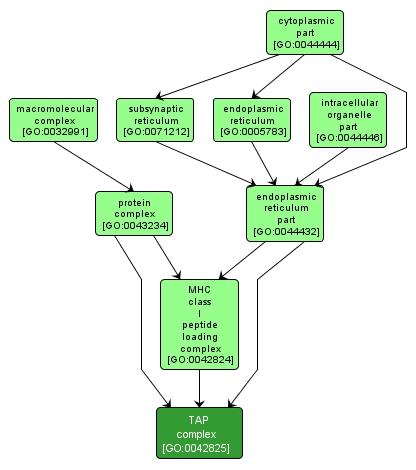GO TERM SUMMARY
|
| Name: |
TAP complex |
| Acc: |
GO:0042825 |
| Aspect: |
Cellular Component |
| Desc: |
A heterodimer composed of the subunits TAP1 and TAP2 (transporter associated with antigen presentation). Functions in the transport of antigenic peptides from the cytosol to the lumen of the endoplasmic reticulum. |
Synonyms:
- transporter associated with antigen presentation
|
|

|
INTERACTIVE GO GRAPH
|














